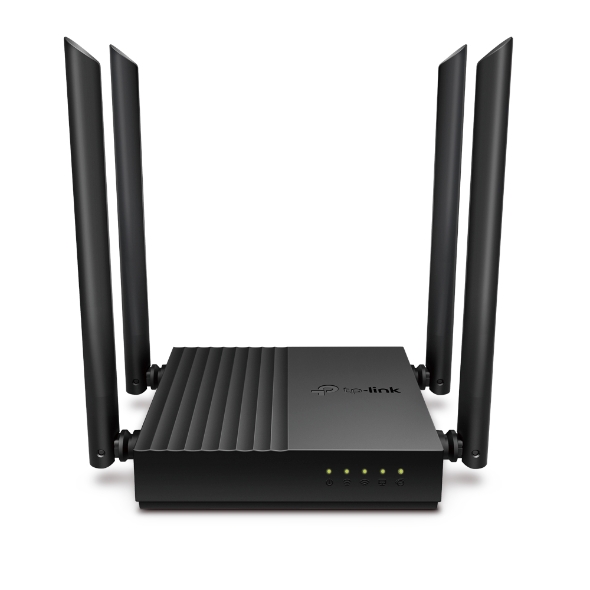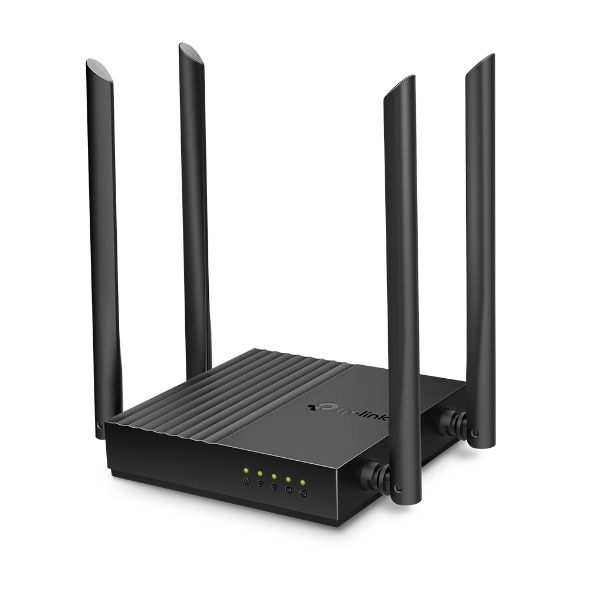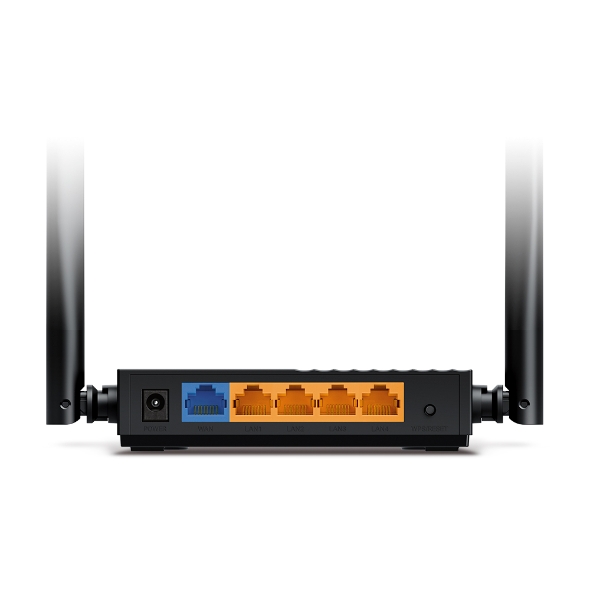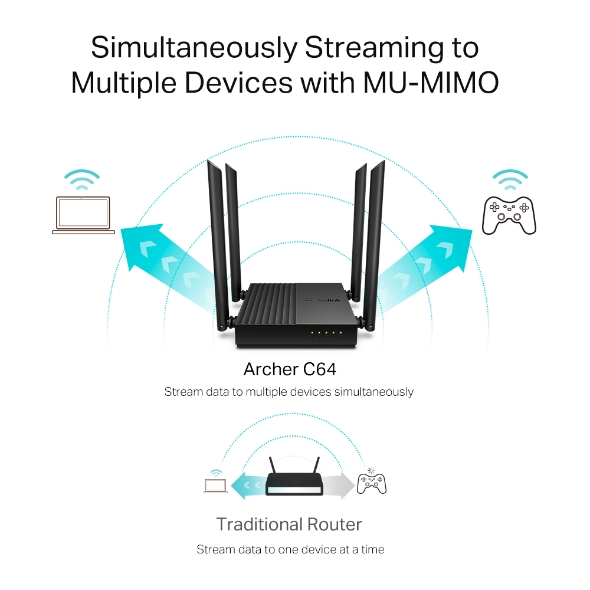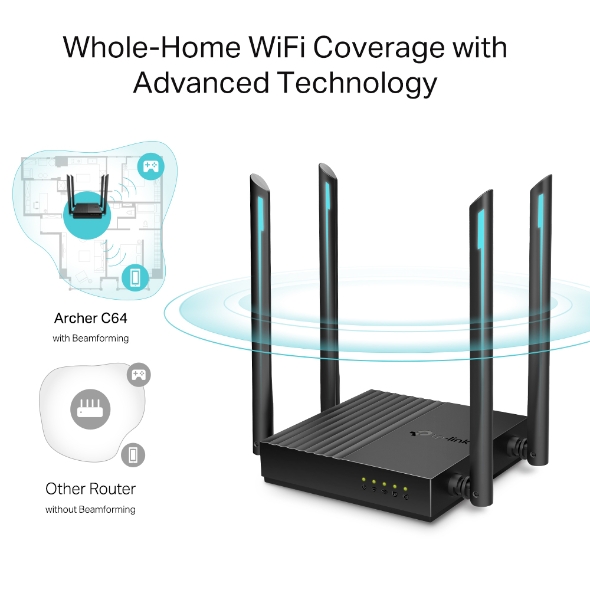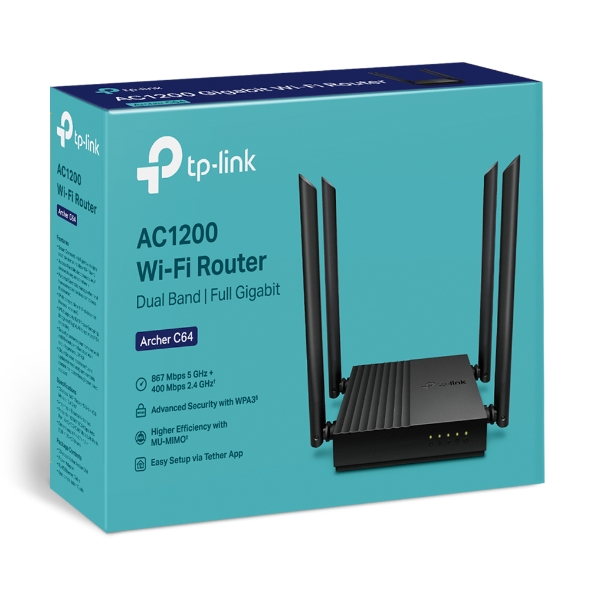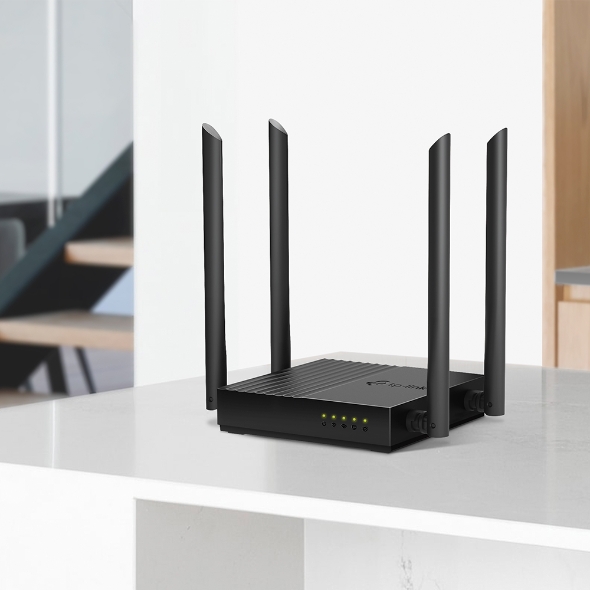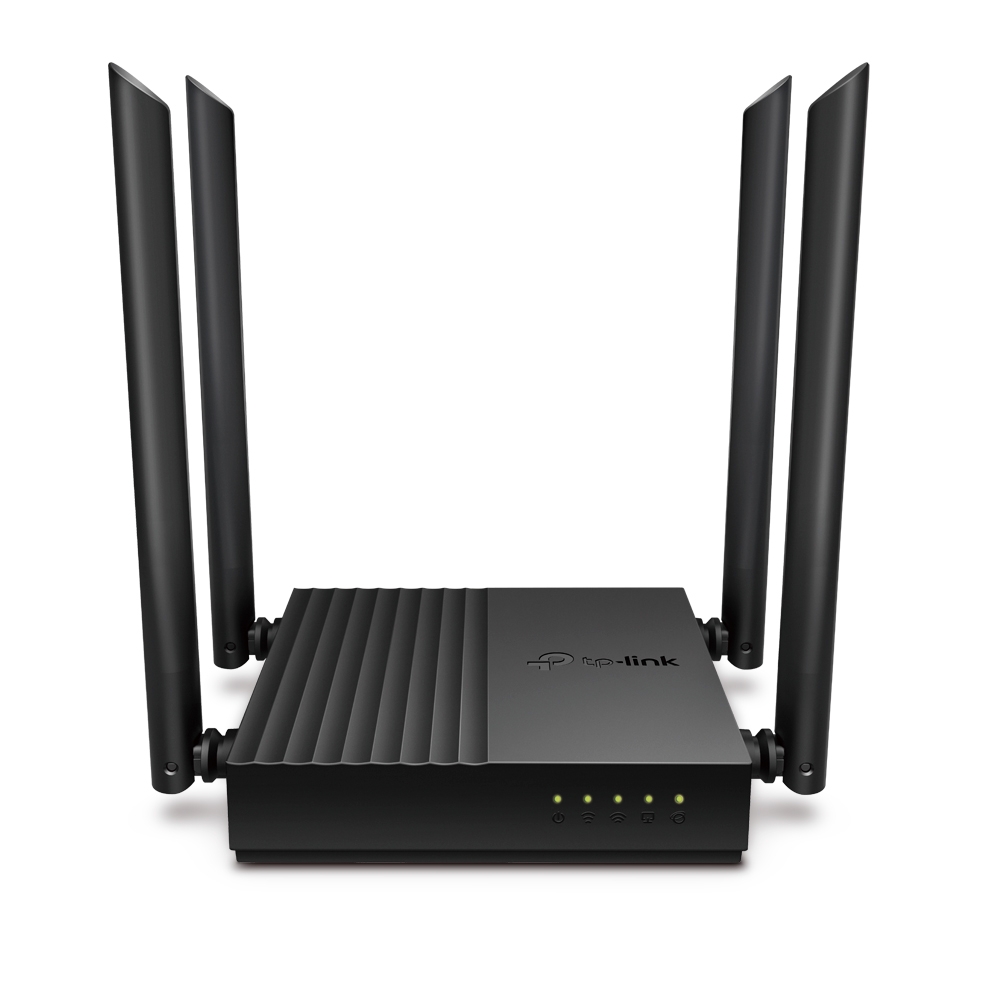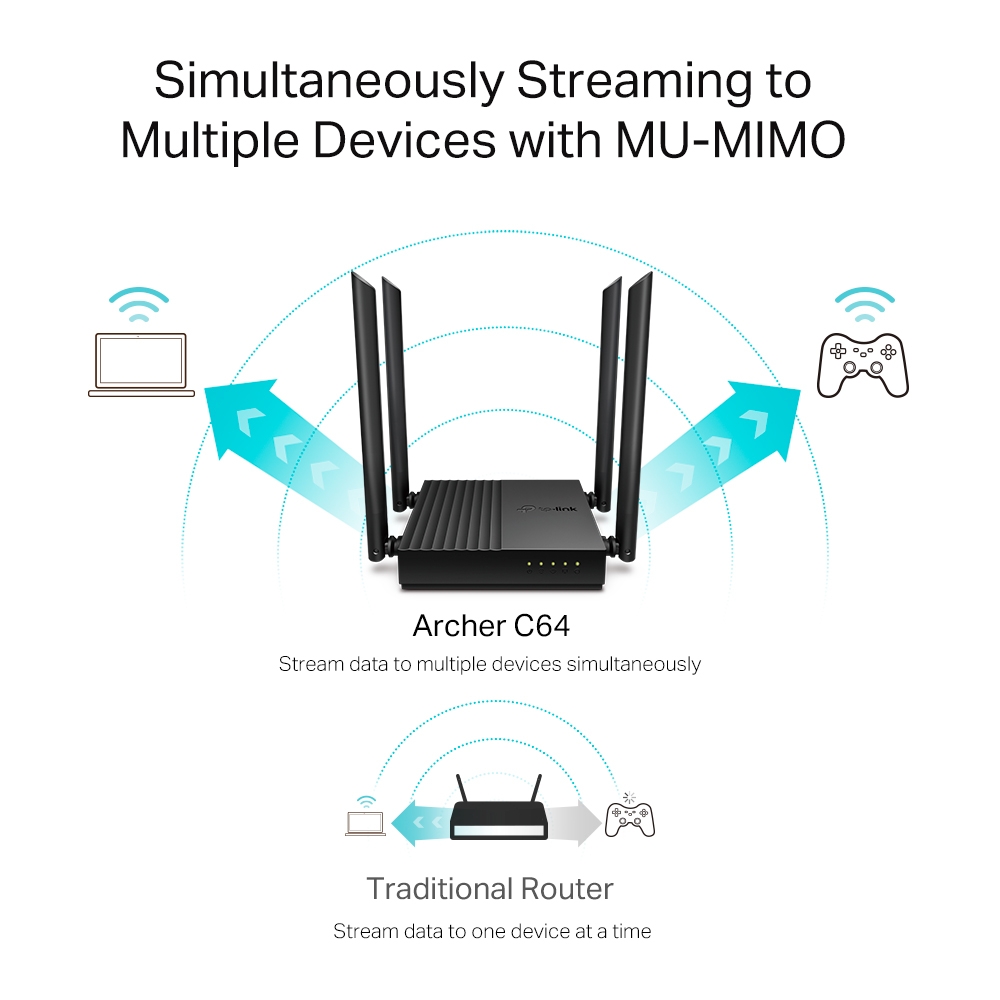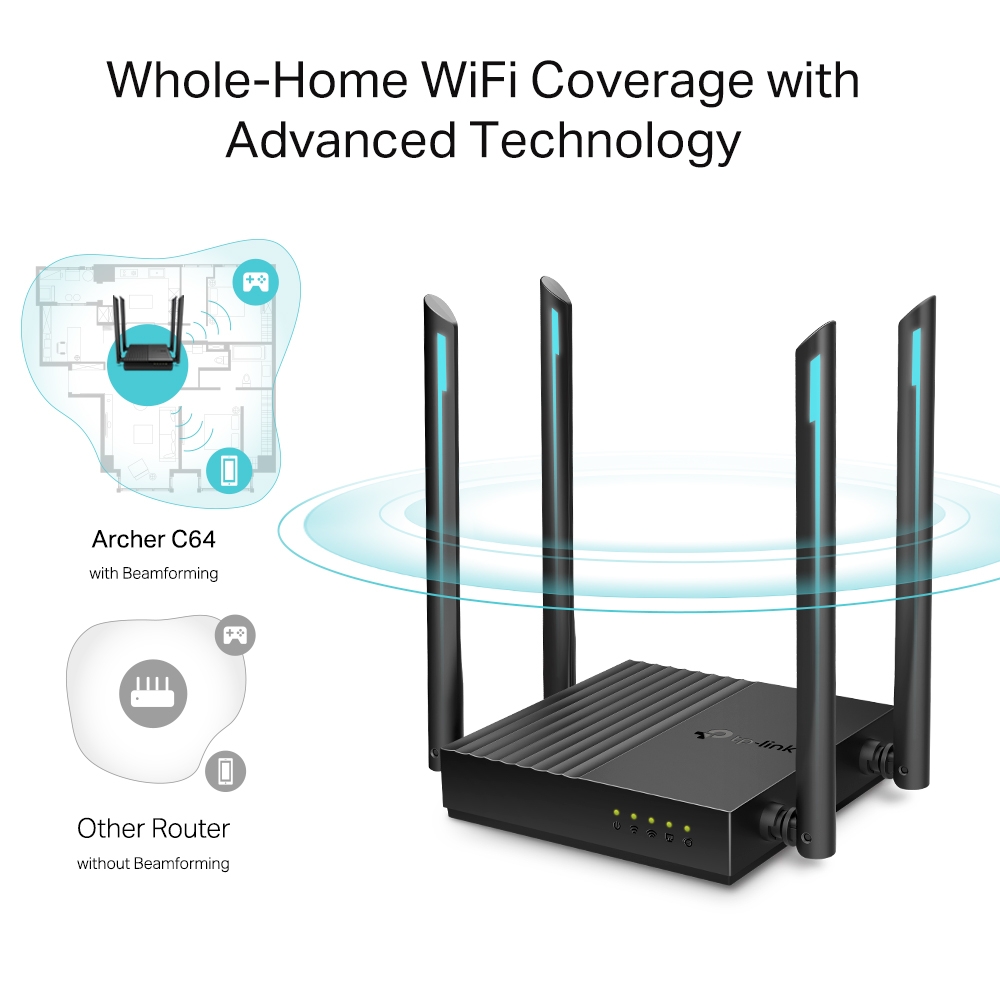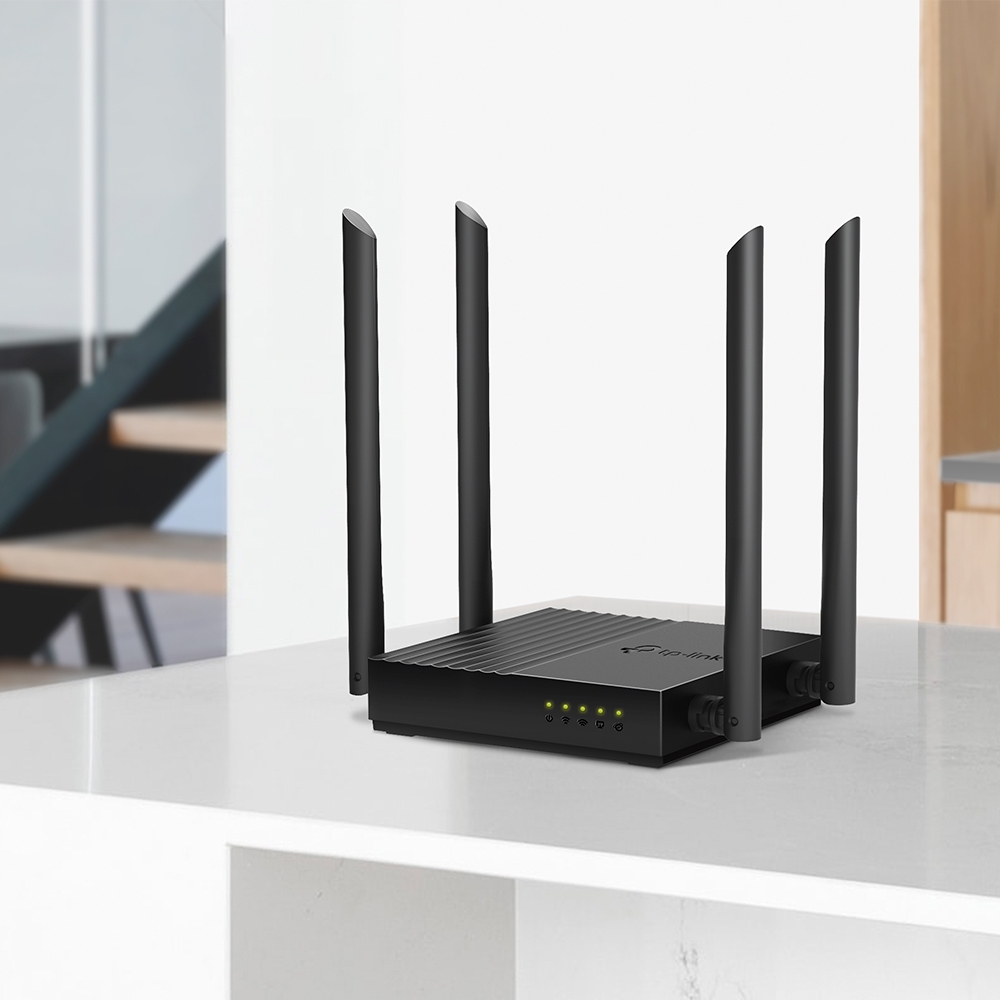Archer C64
AC1200 Wireless MU-MIMO WiFi Router
- 802.11ac Wave2 WiFi – 867 Mbps on the 5 GHz band and 400 Mbps on the 2.4 GHz band†
- Boosted WiFi Coverage – 4 antennas provide stable wireless connections and optimal coverage
- MU-MIMO – Easy network management at your fingertips with TP-Link TetherMU-MIMO achieves 2X efficiency by communicating with up to 2 devices at once‡
- Beamforming – Beamforming technology delivers a highly efficient wireless connection
- AP Mode – Supports Access Point mode to create a new WiFi access point
- Intelligent Connection – Smart Connect directs clients to the less congested band and Airtime Fairness optimizes the time usage
- Easy Setup – Easy network management at your fingertips with TP-Link Tether
| WIRELESS | |
|---|---|
| Standards and Protocols | Wi-Fi 5IEEE 802.11ac/n/a 5 GHzIEEE 802.11n/b/g 2.4 GHz |
| WiFi Speeds | AC12005 GHz: 867 Mbps (802.11ac)2.4 GHz: 400 Mbps (802.11n) |
| WiFi Range | 3 Bedroom Houses 4× Fixed High-Performance AntennasMultiple antennas form a signal-boosting array to cover more directions and large areasBeamformingConcentrates wireless signal strength towards clients to expand WiFi range |
| WiFi Capacity | Medium Dual-BandAllocate devices to different bands for optimal performanceMU-MIMOSimultaneously communicates with multiple MU-MIMO clientsAirtime FairnessImproves network efficiency by limiting excessive occupation |
| Working Modes | Router ModeAccess Point Mode |
| SEGURIDAD | |
|---|---|
| Network Security | SPI FirewallAccess ControlIP and MAC Binding |
| Guest Network | 1× 2.4 GHz Guest Network1× 5 GHz Guest Network |
| WiFi Encryption | WPAWPA2WPA3WPA/WPA2-Enterprise (802.1x) |
| HARDWARE | |
|---|---|
| Processor | 1.2 GHz CPU |
| Ethernet Ports | 1× Gigabit WAN Port4× Gigabit LAN Ports |
| Botones | WPS/Reset Button |
| Power | 12V = 1A |
| SOFTWARE | |
|---|---|
| Protocols | IPv4IPv6 |
| EasyMesh | Mesh networking creates smooth, fast, stable roaming. Archer C64 can flexibly build an EasyMesh network with EasyMesh-Compatible devices, which eliminates Wi-Fi dead zones, expand your network, and fill your entire home with high-speed Wi-Fi. Seamless Wi-Fi connections with one network name, one-click setting and flexible scalability. Learn More> |
| Parental Controls | URL FilteringTime Controls |
| WAN Types | Dynamic IPStatic IPPPPoE(Dual Access)PPTP(Dual Access)L2TP(Dual Access) |
| Quality of Service | QoS by Device |
| Cloud Service | OTA Firmware UpgradeTP-Link IDDDNS |
| NAT Forwarding | Port ForwardingPort TriggeringUPnPDMZ |
| IPTV | IGMP ProxyIGMP SnoopingBridgeTag VLAN |
| DHCP | ServerDHCP Client ListAddress Reservation |
| DDNS | TP-LinkNO-IPDynDNS |
| Management Features | Tether AppWebpageCheck Web Emulator> |
| OTHER | |
|---|---|
| System Requirements | Internet Explorer 11+, Firefox 12.0+, Chrome 20.0+, Safari 4.0+, or other JavaScript-enabled browserCable or DSL Modem (if needed)Subscription with an internet service provider (for internet access) |
| Certifications | CE, RoHS |
| Environment | Operating Temperature: 0℃~40℃ (32℉ ~104℉)Operating Humidity: 10%~90% non-condensingStorage Humidity: 5%~90% non-condensing |
| TEST DATA | |
|---|---|
| WiFi Transmission Power | CE: <20dBm(2.4 GHz), <23dBm(5.15 GHz~5.25 GHz)FCC:<30dBm(2.4 GHz & 5 GHz) |
| WiFi Reception Sensitivity | 5 GHz:11a 6Mbps:-95dBm11a 54Mbps:-77dBm11ac VHT20 MCS8:-71dBm11ac VHT40 MCS9:-67dBm11ac VHT80 MCS9:-63dBm2.4 GHz:11g 6Mbps: -96dBm11g 54Mbps: -78dBm11n HT20 MCS7:-77dBm11n HT40 MCS7:-74dBm11ac VHT20 MCS8:-73dBm11ac VHT40 MCS9:-68dBm |
| PHYSICAL | |
|---|---|
| Dimensions (W×D×H) | 4.7 × 4.7 × 1.1 in (120 × 120 × 27.9 mm) |
| Package Content | Wireless Router Archer C64Power AdapterRJ45 Ethernet CableQuick Installation Guide |
†Maximum wireless signal rates are the physical rates derived from IEEE Standard 802.11 specifications. Actual wireless data throughput and wireless coverage are not guaranteed and will vary as a result of 1) environmental factors, including building materials, physical objects, and obstacles, 2) network conditions, including local interference, volume and density of traffic, product location, network complexity, and network overhead, and 3) client limitations, including rated performance, location, connection, quality, and client condition.
‡Use of MU-MIMO requires clients to also support MU-MIMO.
